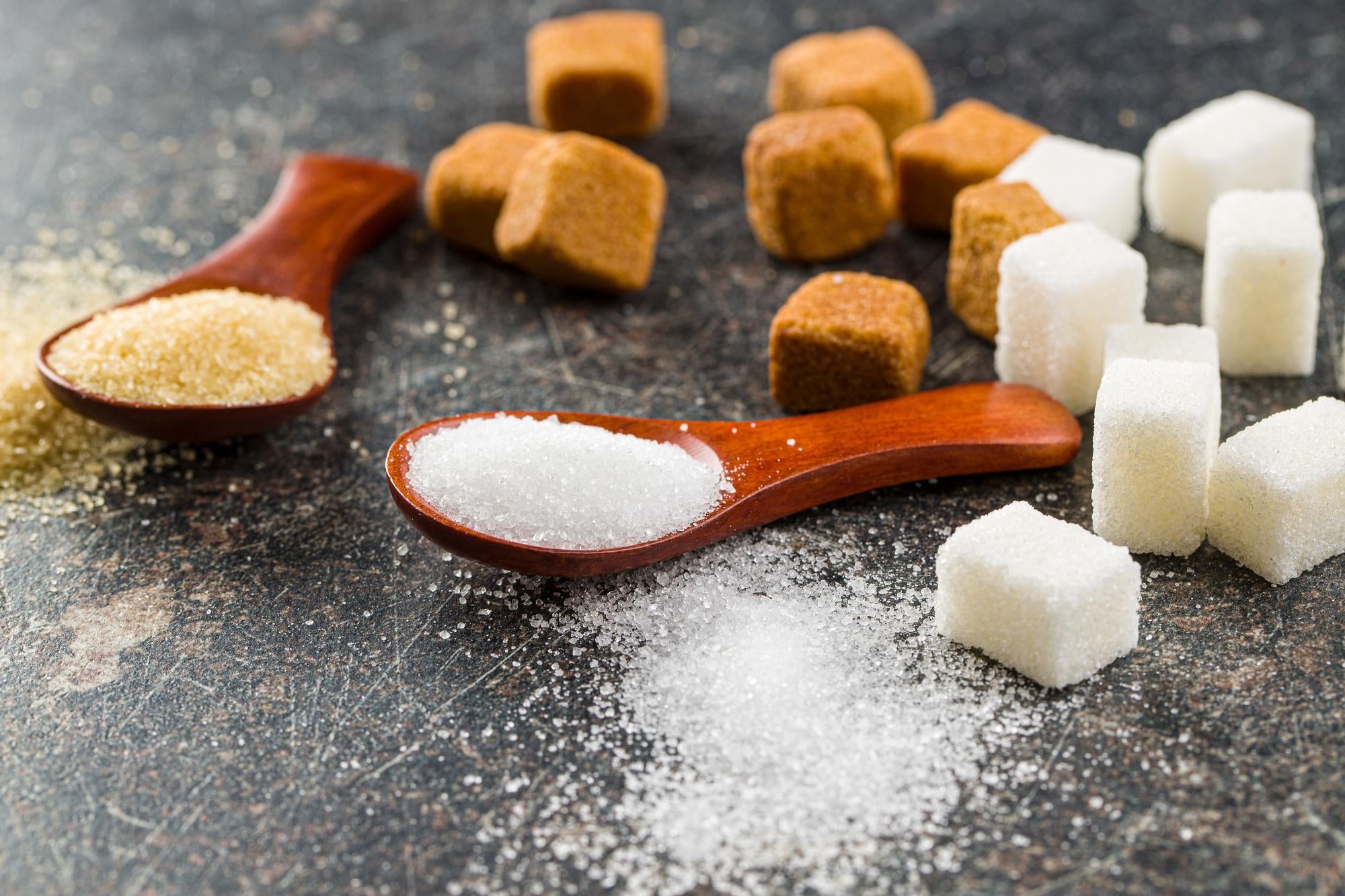From soil to refinery: How sugar beet vs sugar cane differ across the entire production cycle
Unpacking Sugar Beet Vs Sugar Cane: Crucial Information on Their Usages and Impact on the Sugar Market
The distinction between sugar beet and sugar cane plays an essential duty in the international sugar market. Each crop has unique growing practices and geographic preferences. Their handling techniques differ considerably, affecting dietary accounts and economic ramifications. Furthermore, ecological sustainability is becoming increasingly pertinent in consumer selections. Understanding these factors can brighten the complexities of the sugar industry and its future direction. What remains to be discovered are the changing fads that might reshape this landscape.
Overview of Sugar Beet and Sugar Cane
Sugar beet and sugar cane are two primary sources of sucrose, each grown in unique settings and having distinct attributes. Sugar beet, a root veggie, flourishes in temperate climates, mainly in Europe and The United States And Canada. It is generally gathered in the autumn and undertakes processing to remove sugar from its high sucrose web content. On the other hand, sugar cane is an exotic turf that prospers in warmer areas, such as Brazil and India. Its high stalks are gathered year-round, providing a constant supply of sugar.The sucrose drawn out from sugar cane is usually viewed as having a more complex flavor profile contrasted to that from sugar beet. Both resources add significantly to the worldwide sugar market, affecting costs and availability. Recognizing their differences is crucial for stakeholders in farming, food production, and economics, as these plants play a crucial function in food systems worldwide.
Growing Practices and Geographic Distribution
Although both sugar beet and sugar cane are essential resources of sucrose, their growing methods and geographical circulation differ considerably. Sugar beet prospers in temperate climates, especially in Europe and North America, where its cooler expanding seasons improve root advancement. Farmers frequently exercise crop turning and use innovative agricultural technologies to make the most of yields, favoring well-drained, productive soils.In comparison, sugar cane embellishments in exotic and subtropical regions, with Brazil, India, and China being the leading manufacturers. Its farming calls for warmer temperature levels and enough rains, making watering crucial in drier locations. Sugar cane is commonly expanded in monoculture systems, which can cause soil deficiency if not taken care of sustainably. Furthermore, harvesting techniques differ; sugar cane is usually cut by hand or machine, while sugar beet is frequently gathered using specific equipment. These geographical and cultivation variations considerably impact the international sugar market and local economies.
Processing Approaches and Production Techniques
The handling methods and production methods for sugar beet and sugar cane emphasize considerable differences that influence the end product's top quality and features. Sugar beets undertake a simple process, where they are harvested, washed, and sliced into slim chips before going through warm water removal to dissolve the sugar. The resulting juice is after that made clear, evaporated, and taken shape to create granulated sugar.Conversely, sugar cane processing includes crushing the stalks to draw out juice, complied with by a series of home heating and boiling steps. This technique includes the elimination of impurities and additional dissipation, leading to condensation. In addition, sugar cane processing usually stresses the manufacturing of molasses and bagasse, which can be made use of for energy or various other products.These varied strategies reflect not just the distinctions in the resource materials however also their effects for performance, sustainability, and last sugar attributes out there.
Nutritional Profiles and Health Implications
An analysis of the nutritional profiles of sugar beet and sugar cane reveals distinct distinctions in their nutrient make-up. Each resource offers special health and wellness benefits that can affect dietary options. Understanding these variations is vital for making educated decisions pertaining to sugar consumption and overall health and wellness.

Nutrient Composition Comparison
Nutritional accounts of sugar beet and sugar cane disclose distinctive differences that can influence health and wellness results. Sugar beetroots consist of higher degrees of essential nutrients such as fiber, potassium, and magnesium, which add to digestion health and cardio feature. On the other hand, sugar cane mainly uses sucrose, with very little nutritional value beyond power provision. The fiber material in sugar beetroots help in managing blood sugar levels, while sugar cane lacks this benefit. Additionally, sugar beets have a reduced glycemic index contrasted to sugar cane, which might be useful for people handling blood sugar level. These variants in nutrient make-up underscore the relevance of thinking about the source of sugar, specifically for those mindful of their dietary choices and general wellness.
Health And Wellness Benefits Introduction
Health and wellness benefits derived from sugar beet and sugar cane intake vary substantially because of their differing dietary profiles. Sugar beetroots are rich in essential nutrients, consisting of nutritional fiber, vitamins, and minerals, particularly folate and potassium. This composition can sustain gastrointestinal wellness, enhance cardiovascular function, and help in blood sugar policy. On the other hand, sugar cane largely uses a source of carbohydrates and energy, with less minerals and vitamins. Nevertheless, it includes anti-oxidants, which may assist fight oxidative stress and anxiety and swelling. Sugar beet vs sugar cane. The health and wellness implications of taking in these sugars additionally depend on their forms-- whole foods versus fine-tuned sugars-- affecting total advantages. Inevitably, moderation is essential, as too much intake of either can bring about health problems, highlighting the significance of balanced intake
Financial Influence On Regional and Worldwide Markets
Although both sugar beet and sugar cane offer as important sources of sugar, their economic influence on regional and global markets vary considerably. Sugar cane primarily grows in exotic climates, making it a staple in nations like Brazil and India, where the agricultural infrastructure is greatly geared towards large ranches. This contributes to substantial export profits and job opportunity in these regions. On the other hand, linked here sugar beet is typically grown in warm areas, especially in Europe and The United States And Canada, where its manufacturing supports neighborhood economic climates with smaller-scale farming and handling industries.The international sugar market is affected by tariffs, profession agreements, and subsidies, which can favor one kind of sugar over the various other. Variations in prices also impact both regional farmers and worldwide markets, resulting in varying economic security learn the facts here now in regions based on sugar manufacturing. As a result, the economic landscape formed by sugar beet and sugar cane is complex and multifaceted, mirroring wider farming patterns.
Environmental Factors To Consider and Sustainability
The environmental factors to consider bordering sugar beet and sugar cane production emphasize substantial distinctions in land use, water consumption, and carbon impacts. Comprehending these aspects is important for assessing the sustainability of each plant. The influences of cultivation methods on ecosystems and sources must be meticulously analyzed to inform future agricultural decisions.
Land Use Impacts
When examining the land use influences of sugar beet and sugar cane growing, it comes to be noticeable that each plant presents unique environmental factors to consider and sustainability difficulties. Sugar beet, commonly grown in warm areas, typically requires significant land conversion in locations formerly made use of for varied plants, possibly causing reduced biodiversity. On the other hand, sugar cane is mainly cultivated in tropical regions, where its substantial land requirements can lead to deforestation and environment loss. Additionally, sugar cane fields may displace food crops, raising worries concerning food safety and security. Both plants add to dirt deterioration via monoculture techniques, necessitating sustainable agricultural approaches. Ultimately, the land usage implications of both sugar beet and sugar cane farming highlight the need for balance between economic practicality and ecological stewardship.
Water Consumption Differences
Water intake represents a crucial consider evaluating the sustainability of sugar beet and sugar cane manufacturing. Sugar cane commonly requires substantially a lot more water than sugar beet, largely due to its growth problems in tropical settings where irrigation is commonly needed. On the other hand, sugar beet is largely cultivated in pleasant regions and typically depends much more on rainfall, making it less depending on substantial irrigation systems. This distinction in water use impacts local water resources and can lead to issues over water scarcity. Additionally, the efficiency of water use in sugar beet growing commonly causes reduced general water footprints compared to sugar cane. Comprehending these variations is vital for examining the ecological ramifications and sustainability of these 2 sugar sources.
Carbon Impact Evaluation
Reviewing the carbon footprint of sugar beet and sugar cane production is crucial for recognizing their total ecological effect. Sugar beet farming normally results in a reduced carbon footprint compared to sugar cane, largely because of the lowered reliance on nonrenewable fuel sources for processing and transport. Additionally, sugar beet is commonly expanded in temperate climates, minimizing the demand for comprehensive watering and minimizing greenhouse gas discharges. On the other hand, sugar cane farming usually involves greater power usage, especially in exotic areas, where cultivation and handling can be resource-intensive. Land-use modifications linked with sugar cane expansion can intensify carbon emissions. Inevitably, both plants existing unique sustainability obstacles that have to be addressed to decrease their environmental footprint in the global sugar market.
Future Patterns in the Sugar Industry
Just how will the sugar industry evolve in the coming years? Sector professionals anticipate numerous transformative patterns forming its future. A substantial change in the direction of sustainability is anticipated, driven by intense consumer recognition and regulatory stress. This will likely cause boosted investments in environment-friendly manufacturing approaches, benefiting both sugar beet and sugar cane growers.Additionally, technological developments, such as accuracy farming and biotechnology, are anticipated to enhance crop returns and lower source usage. The market may also see a surge in different sugar, as customers significantly look for healthier read here options.Moreover, the global demand for sugar is forecasted to rise and fall, affected by transforming dietary choices and economic problems. As nations apply stricter sugar tax obligations, manufacturers will need to adapt their techniques to remain competitive. Overall, the sugar industry appears poised for considerable evolution, stressing sustainability and innovation in reaction to market characteristics.
Frequently Asked Questions
What Are the Main Distinctions in Taste In Between Sugar Beet and Sugar Cane?
The main differences in preference in between sugar beet and sugar cane can be refined. Sugar cane is usually referred to as having a richer, extra complex taste, while sugar beet often tends to be rather milder and less fragrant.
Just How Do Sugar Beet and Sugar Cane Affect Cooking Recipes In Different Ways?
The differences in between sugar beet and sugar cane in baking recipes primarily depend on their wetness material and taste accounts - Sugar beet vs sugar cane. Sugar cane frequently improves caramelization, while sugar beet has a tendency to produce an extra neutral sweet taste
Can Sugar Beet and Sugar Cane Be Used Mutually in Cooking?
Sugar beet and sugar cane can typically be utilized mutually in cooking; nonetheless, refined distinctions in taste and appearance may affect the last end result of dishes, relying on the particular recipe and desired outcomes.

What Are the Byproducts of Processing Sugar Beet and Sugar Cane?
The byproducts of processing sugar beet consist of molasses, pet feed, and biofuels, while sugar cane processing returns bagasse, molasses, and ethanol (Sugar beet vs sugar cane). Both crops contribute substantially to numerous sectors beyond sugar production
Exactly How Do Sugar Beet and Sugar Cane Add To Biofuel Production?
Sugar beet and sugar cane work as considerable resources for biofuel production. Their residues, after sugar removal, can be transformed right into bioethanol, contributing to sustainable power initiatives and lowering dependence on fossil gas in different regions.